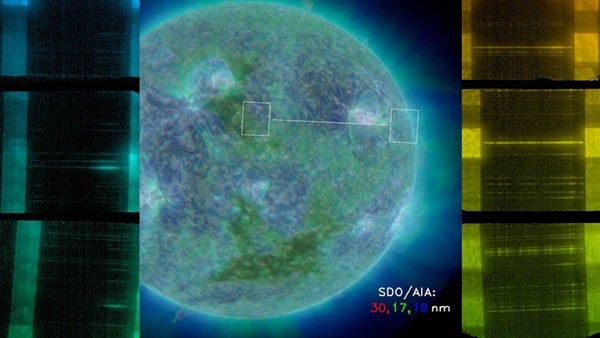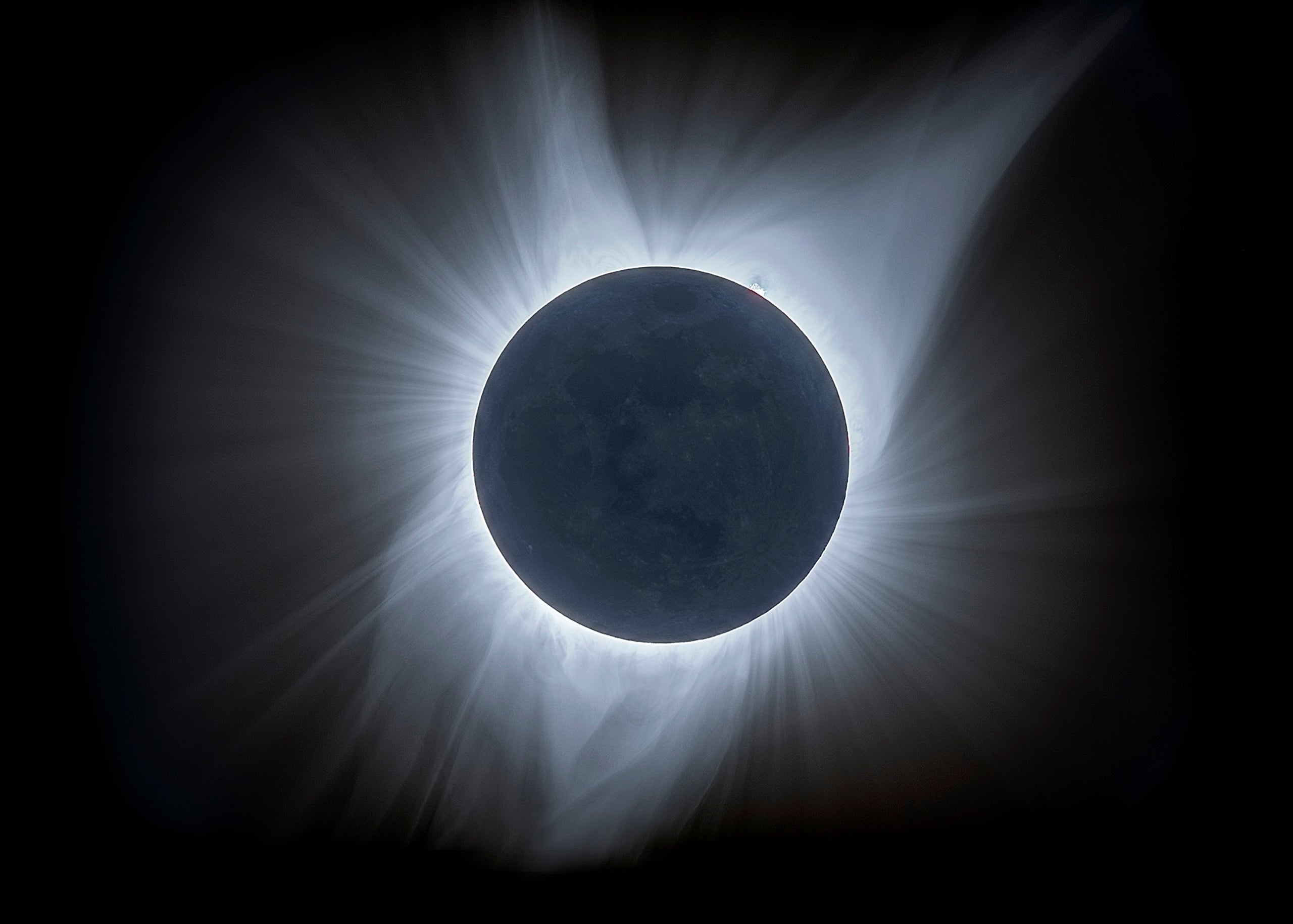Clear evidence now suggests that the heating mechanism depends on regular but intermittent explosive bursts of heat, rather than on continuous gradual heating.
Jim Klimchuk, a solar scientist at NASA’s Goddard Space Flight Center in Greenbelt, Maryland, explained at the Triennial Earth-Sun Summit (TESS) meeting that the new evidence supports a theory that the Sun’s corona is heated by tiny explosions called nanoflares. These are impulsive heating bursts that individually reach incredibly hot temperatures of some 18 million degrees F (10 million degrees C) — even greater than the average temperature of the corona — and provide heat to the atmosphere. The research evidence presented by the panel spotted this super hot solar material, called plasma, representative of a nanoflare.
“The explosions are called nanoflares because they have one-billionth the energy of a regular flare,” said Klimchuk. “Despite being tiny by solar standards, each packs the wallop of a 10-megaton hydrogen bomb. Millions of them are going off every second across the Sun, and collectively they heat the corona.”
The first evidence of the presence of this superhot plasma was presented by Adrian Daw from Goddard and principal investigator of the Extreme Ultraviolet Normal Incidence Spectrograph (EUNIS) sounding rocket mission. EUNIS flew on a 15-minute flight in December 2013 equipped with an instrument called a spectrograph, which can gather information about how much material is present at a given temperature. The EUNIS spectrograph was tuned into a range of wavelengths useful for spotting material at temperatures of 18 million degrees F (10 million degrees C), the temperatures that signify nanoflares. The spectrograph unambiguously spotted this extremely hot material in active regions that visibly appeared to be quiet. In a quiet region, such hot temperatures clearly weren’t due to a large explosive solar flare and so are a smoking gun that something otherwise unobservable was heating up this area.
Daw also reported the results from another experiment launched on sounding rockets in 2012 and 2013 that imaged soft X-rays from the corona. These results, too, confirmed the presence of superhot plasma on the Sun.
Iain Hannah, an astrophysicist at the University of Glasgow in Scotland, spoke about NASA’s Nuclear Spectroscopic Telescope Array (NuSTAR), which typically examines X-rays from distant stars and black holes. However, it is also capable of observing the much brighter light of the Sun — something most astronomical observatories can’t do.
“X-rays are a direct probe into the high-energy processes of the Sun,” said Hannah.
NuSTAR saw X-rays that are signatures of superhot plasma in non-flaring active regions. While the sounding rocket experiments observed the energy produced by these nanoflares, NuSTAR is also able to look for the X-ray signatures of energetic particles. Understanding what and how particles are accelerated out from these smaller nanoflare explosions can help scientists understand what processes create them.
Stephen Bradshaw, a solar astrophysicist at Rice University in Houston, Texas, was the last speaker. Bradshaw used a sophisticated computational model to demonstrate why spotting signatures of the nanoflares has been so difficult and how the new evidence will help researchers go forward to improve theories on the details of coronal heating, one day allowing heliophysics researchers to at last solve the coronal heating mystery.










